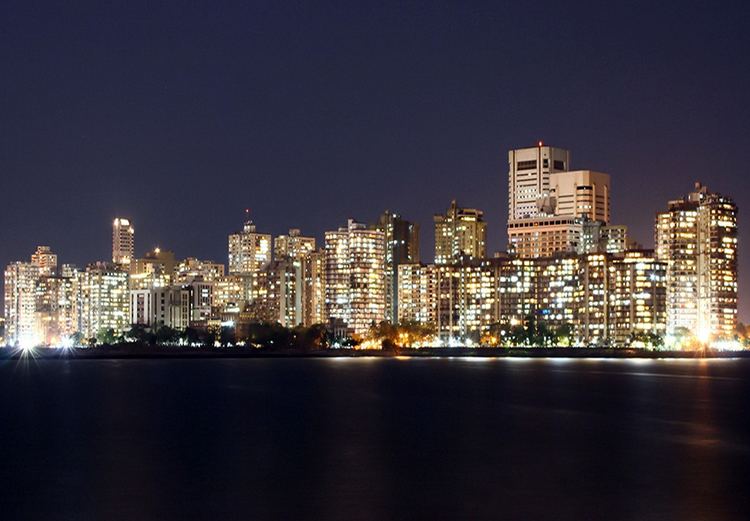 | ||
Urbanization in India began to accelerate after independence, due to the country's adoption of a mixed economy, which gave rise to the development of the private sector. Urbanisation is taking place at a faster rate in India. Population residing in urban areas in India, according to 1901 census, was 11.4%. This count increased to 28.53% according to 2001 census, and crossing 30% as per 2011 census, standing at 31.16%. According to a survey by UN State of the World Population report in 2007, by 2030, 40.76% of country's population is expected to reside in urban areas. As per World Bank, India, along with China, Indonesia, Nigeria, and the United States, will lead the world's urban population surge by 2050.
Contents
- The transition period
- Modern India
- Causes of urbanization in India
- Consequences of urbanization
- Urban unemployment
- References
Mumbai saw large scale rural-urban migration in the 20th century.[see main] Mumbai accommodates 12.5 million people, and is the largest metropolis by population in India, followed by Delhi with 11 million inhabitants. Witnessing the fastest rate of and urbanisation in the world, as per 2011 census, Delhi's population rose by 4.1%, Mumbai's by 3.1% and Kolkata's by 2% as per 2011 census compared to 2001 census.
The transition period
After independence, India faced poverty, unemployment, and economic backwardness. The first Prime Minister of India, Pandit Jawaharlal Nehru, failed to focus on the domain of science and technology. The mixed economy system was adopted, resulting in the growth of the Public sector in India crippling down the development of Indian economy leading to what is popularly known as Hindu rate of growth.
Modern India
The contribution of the agricultural sector to the GDP of India started to decline and the percentage contribution from secondary sector increased. The period after 1941, witnessed rapid growth of four metropolitan cities in India, which were Kolkata, Delhi, Mumbai, and Chennai. The nation's economy saw a rise due to industrial revolution and the invention of new technologies increased the standard of living of people living in urban areas. The growth of public sector resulted in development of public transport, roads, water supply, electricity, and hence the infrastructure of urban areas.
Maharashtra was the most urbanized state in India till 1991, stood behind Tamil Nadu in 2001 and third after it in 2011, with Kerala being second, with the urban-total state population ratio. However, Maharashtra's urban population of 41 million, far exceeds that of Tamil Nadu which is at 27 million, as per the 2001 census.
Causes of urbanization in India
The main causes of urbanization in India are:
Consequences of urbanization
Rapid rise in urban population, in India, is leading to many problems like increasing slums, decrease in standard of living in urban areas, also causing environmental damage.
The Industrial Revolution in the 18th century caused countries like United States and England to become superpower nations but the present condition is worsening. India's urban growth rate is 2.07% which seems to be significant compared to Rwanda with 7.6%. India has around 300 million people living in metropolitan areas. This has greatly caused slum problems, with so many people over crowding cities and forcing people to live in unsafe conditions which also includes illegal buildings. Water lines,roads and electricity are lacking which is causing fall of living standards. It is also adding to the problem of all types of pollution.
Urbanization also results in a disparity in the market, owing to the large demands of the growing population and the primary sector struggling to cope with them.
Allan Chirare, 15 August 2015 quotes: "Urbanization is just becoming a disaster to the city of Mumbai in India."
It can be argued that urbanization impacts the migrant himself at multiple levels. His network of friends and family become his support system during the initial transformation phase and the struggle to find a job. His struggle could take months to years in order to find a stable job. He is responsible to support himself in the city and family back home.
Some of positive shifts that have been back home from where migrants come, easing out of financial pressures as well as lifestyle up gradation of family through better homes and products that the migrant sends back.
On the otherhand, it poses a big challenge for the cities that are growing due to migrant population shifting in. How will cities support in terms of resources, land and space.
Urban unemployment
The National Sample Survey Organisation reported the following urban unemployment rates for the period July 2011–June 2012:
